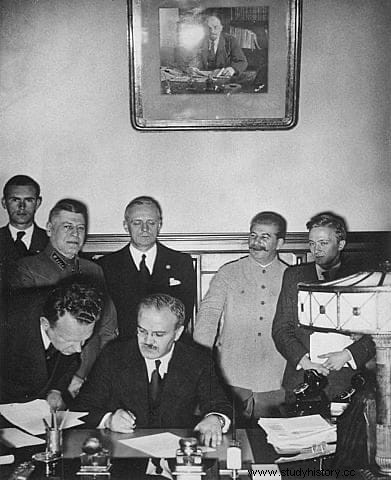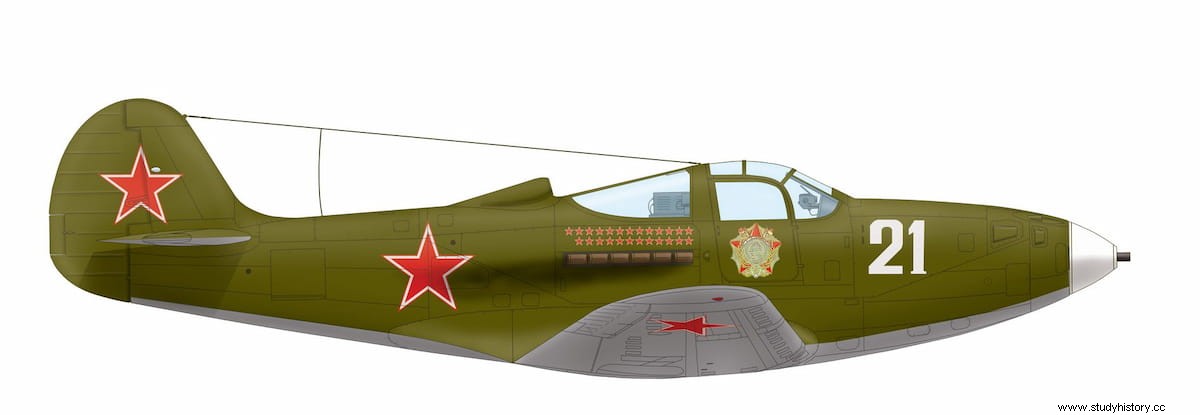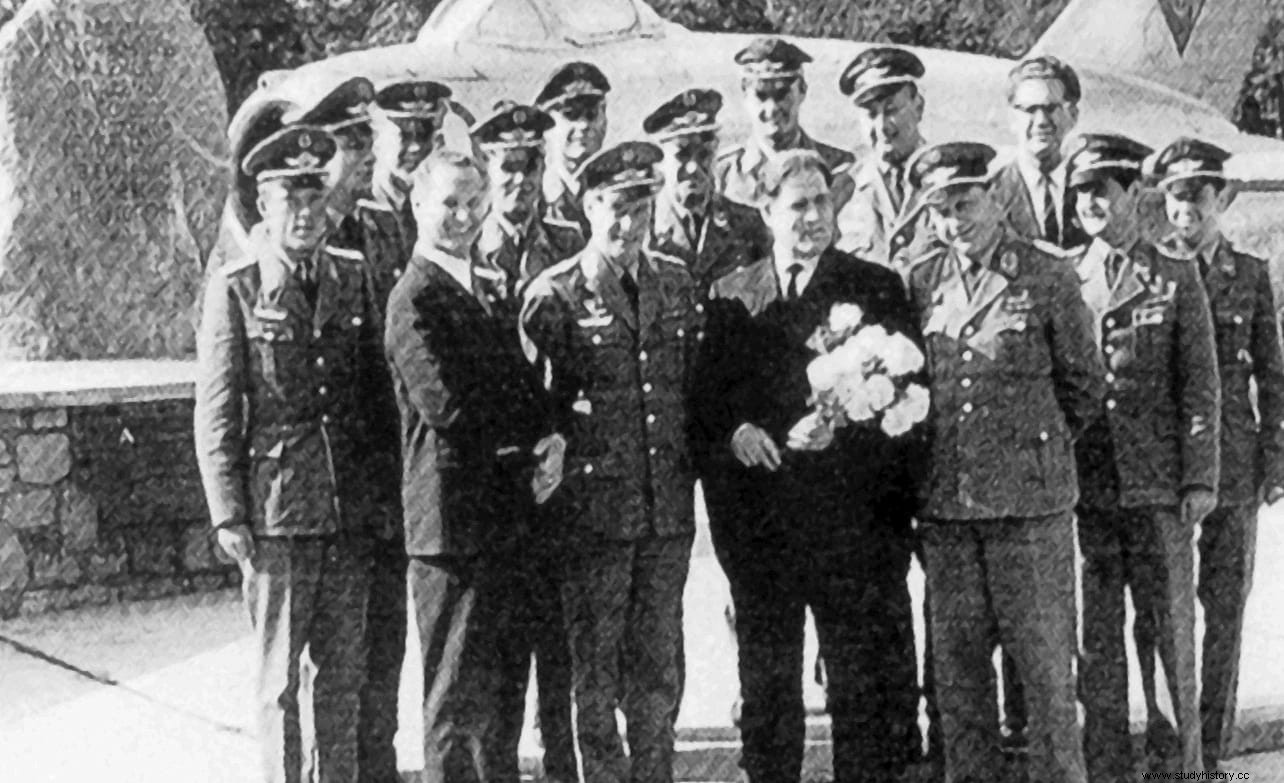The city of Kazan, capital of the Republic of Tatarstan (Russia), has a medieval historic center outside of which the local cemetery is located. In it there is a monument in memory of the Second World War and, next to it, an artistic tomb on whose tombstone you can read the name of Mikhail Devyatayev, who was a character with a more than curious story:he starred in one of the most amazing escapes from World War II-and we've seen quite a few here-and yet he was considered a suspect in his country for a long time until the truth came out and he went from villain to hero.
The Kazan cemetery is called Arsk Field, which derives from Archa Daugha, one of the administrative divisions of what was the former Kazan Khanate, itself part of the Golden Horde, until the 16th century. It must be a fascinating place because, in addition to graves, it has a turbulent history behind it:the Tartar camp that besieged Kazan under the orders of Ivan the Terrible was located there, there the government troops faced Pugachev's rebels in 1774 and there they met the Bolsheviks in October to start the local version of the revolution in 1917.

The place seems perfect, then, for a character like Mijail Devyatayev, although he was not a native of the place. He was born in a small town in the Republic of Mordovia called Torbeyevo and he did so precisely in that revolutionary year of 1917. His family was peasant and very large, since he was the thirteenth child, despite which he was able to study at the School of Navigation Fluvial, graduating in 1938 and starting his professional life in that sector as an officer of a ship that made voyages on the Volga.
However, he had to interrupt his work by being called up and inducted into the Red Army. Interestingly, he was not assigned to the navy but to aviation:he entered the Chkalov Flight School, from which he emerged as a pilot in 1940. Just in time because the winds of war were blowing:on the one hand, the Soviet Union had maintained since September from 1939 a conflict with Finland, the so-called Winter War, which he pyrrhically won in March; on the other, Germany and France and the United Kingdom had also taken up arms in September, after the invasion of Poland.
In reality, World War II was at a strange impasse , a situation of immobility that became known as the Joke War but ended in May with the Wehrmacht's invasion of France, Belgium, the Netherlands, and Luxembourg, in parallel with the occupation of Norway and Denmark. The dispute was spreading and widening, so it was a matter of time before the Molotov-Ribbentrop Pact, a non-aggression agreement between the Germans and the Soviets named after their foreign ministers, was blown up.

Both countries were aware of this and were preparing, but Hitler began his Operation Barbarossa earlier than Stalin anticipated, which is why the first phase of the attack, which began on June 22, 1941, was so sudden. The Red Army was still in the process of modernizing, having been slowed down by the revolution and subsequent civil war, so in those early days the Germans steamrolled through the Soviet defenses.
In this context, aviation played a fundamental role, which is why Mikhail was one of the first soldiers to enter combat in what is known in the USSR as the Great Patriotic War. He did it immediately at the controls of his plane and on June 24, that is, two days after the Teutonic aggression, he achieved the first shooting down of a Junkers Ju 87, the famous model known as Stuka , which the Luftwaffe used in dive bombing to pave the way for ground troops.
Like other colleagues, his effort in those first dramatic moments was crucial and he was recognized by being awarded the Order of the Red Banner, a decoration for military merit that was the most important in the country from its creation in 1918 to 1933. when it was displaced by the Order of Lenin. In fact, Mijaíl would also win the latter, among others. And it is that, despite the fact that on September 23 he was seriously injured in the leg and spent a long time convalescing, he later returned to the front.

First, they assigned him to a Polikarpov Po-2, a biplane that was the model of aircraft from which more units were made in the history of aviation. The Po-2, which was designed in 1927, was completely obsolete in 1941 and therefore was hardly used in combat, in night attacks, harassment or propaganda; In general, it was used more for training or for light passenger transport, not counting extra uses such as an ambulance or fumigator (in fact, it was nicknamed Kukuruznik , which means corn).
Mikhail spent most of the war flying medical missions but after a meeting with Aleksandr Ivanovich Pokryshkin he managed to change things. Pokryshkin was a national flying ace, a visionary who had invented the ShKAS machine gun (a high-rate, gas-operated weapon that was incorporated into fighters and bombers) and the Polikarpov R-5 reconnaissance aircraft (widely used in the Spanish Civil War as a flush bomber, which caused him to be nicknamed that) and that he would reach marshal; but he was already a hero then and arranged for Mikhail to be given a combat assignment again.
This is how, in May 1944, he joined the 104th Guardian Fighter Pilot Regiment, on the Ukrainian front, where, with the rank of Major Lieutenant, he scored nine victories in two months at the controls of a Bell P-39 Airacobra (American-made aircraft that were sent to the USSR by the Lend-Lease Law). However, he was not lucky this time either and was shot down again near Lwów (Lviv), a city in the extreme west of Ukraine (then Poland) occupied by the Germans three years earlier and which the Red Army was trying to retake. As he would not get it until July 27, Mikhail, who survived the crash of his plane but with considerable burns, fell into what was still enemy territory. 
Taken prisoner, he was admitted to the concentration camp in Łódź, present-day Poland. It was a city that hardly suffered damage during the war and where a Jewish ghetto of twenty thousand people had been erected, of which, when Mikhail arrived, there were only less than a thousand left, to the point that it was closed to distribute to the survivors in the nearby fields. Among them was the infamous Radogoszcz prison, where they were exterminated before the fall of the city (they finally chose to set fire to the building with the prisoners inside).
Therefore, the whole place distilled death everywhere and Mijaíl did not want to wait for his turn. On August 13 he escaped but could not go far and, captured again, was transferred to the Sachsenhausen concentration camp. Quite a problem because he was already in Germany, in Oranienburg (Brandenburg), making any escape attempt difficult. The compound had been opened in 1936 to house the excess prison population of Esterwegen, a secondary camp to Neuengamme where French, Belgian, Dutch and Czech prisoners of war had been interned.
Esterwegen was initially for political prisoners but later the payroll was extended to Jews, Poles and Soviets (also Spanish republicans; Largo Caballero was interned there). In August 1944 the war was so clearly tilting towards the Allied side that the Red Army was marching towards it without anyone being able to stop it, so the SS began executing prisoners. Mikhail, aware that sooner rather than later his turn would come as a pilot (those considered potentially more dangerous), managed to swap his identity for that of a deceased infantryman and managed to haggle death for the time being. /P>
He then experienced a new move, this time to Usedom. It was an island off the coast of the Baltic Sea, opposite the mouth of the Oder, which is now divided between Germany and Poland but which at that time was used by the Nazi regime as a camp for teams of forced laborers who served at a base in the northwest island, that of Peenemünde. This one may sound more familiar to the reader, since the V1 and V2 missile programs were developed in it, the weapon that Hitler desperately promoted to try to turn around the course of the war.

The prisoners were used to repair the tracks and manually clean the land of the bombs that had not exploded, since the Allies knew of the activities that were carried out on those islands and dropped some 1,600 tons of them on them. The working conditions were very harsh, not only because of the danger of a device exploding or falling at the hands of friendly bombing, but also because of the harshness of the winter and the brutal treatment of the guards.
That is why Mikhail was determined to escape again, despite being in the heart of a hostile country and speaking neither German nor Polish; he would rather die trying than wait to suffer the same inexorable fate. On February 8, 1945, he convinced three comrades-in-arms named Sokolov, Krivonogov and Nemchenko - later four more were added - to collaborate in an escape, carrying out his plan one night, at the time when the guards usually had dinner and had less effective guarding. They were working on a track when Krivonogoc killed the guard with his shovel.
Then another prisoner named Peter Kutergin put on his uniform and led the group of nine prisoners, as if he were escorting them, to the airfield. There they discreetly boarded the Heinkel He 111 used by the camp commander and took off heading east; Mijaíl was the one piloting, obviously, not in vain he had been gathering information about what the cockpit was like. It was not an easy task because first the mocked Germans tried to intercept the plane - a fighter returning from a mission crossed paths with them but had run out of ammunition - and then it was the Soviet anti-aircraft guns that fired frantically at that enemy bomber.
In fact, the Heinkel was hit, but the pilot's skill still made it possible to land in the village of Gollin, in the USSR. The escapees spent time in hospital to recover from malnutrition and fatigue while undergoing harsh interrogation by the NKVD, who did not believe them. Upon discharge at the end of March, five of them were sent back to the front in a disciplinary battalion and died in action over the following weeks. The rest, being officers, were removed from the service for the duration of the investigation that was opened, since the secret service found it an impossible story.

In November of that year, two months after the end of the war, Mijaíl was discharged from the army without the investigation having been resolved, which was postponed due to not rushing and hurrying. This meant that he was still officially a suspect and, therefore, he was treated as such, not finding a job according to his degree and having to earn a living as a longshoreman in the river port of Kazan. This unfair situation lasted until 1957, when Sergei Korolyov, head of the Soviet space program and rocket designer, began to analyze the information that those prisoners had provided years before about the German V1 and V2.
Koriolov discovered that the information provided was so valuable that no enemy agent would provide it, so he unearthed the file of the escapees who were still alive, presented it to the authorities explaining the value of their testimonies and that August Mijaíl went from being a pariah to become a Hero of the Soviet Union, being unanimously applauded, receiving distinctions, starring in books and articles, etc. This is how he gathered some of the most outstanding decorations in the country, such as the aforementioned Order of Lenin, the Order of the Patriotic War (1st and 2nd class), the honorary citizenship of the Republic of Mordovia and many more.
Perhaps personally, his greatest reward was to return to that job as a river captain on the Volga, where he was in command of the first domestic models of hydrofoils or hydrofoils (a type of ship that reaches great speed by carrying the hull above the water). In 1972 he wrote a memoir and in 2002 it was time for him to leave this world to which he had clung so much in difficult times. A museum in his birthplace remembers his exploits and a rocket was named after him but it is probably more curious that there is a monument in memory of him on the island of Usedom.
